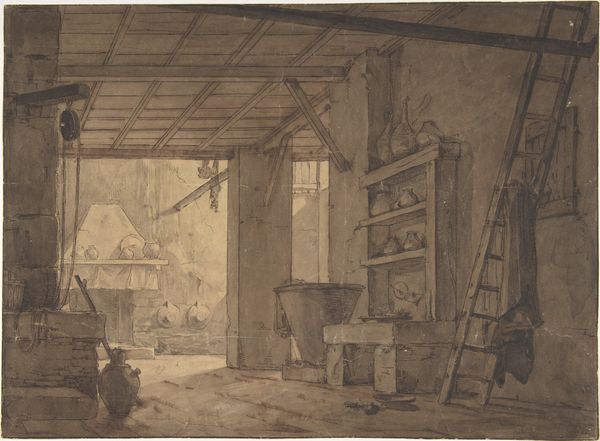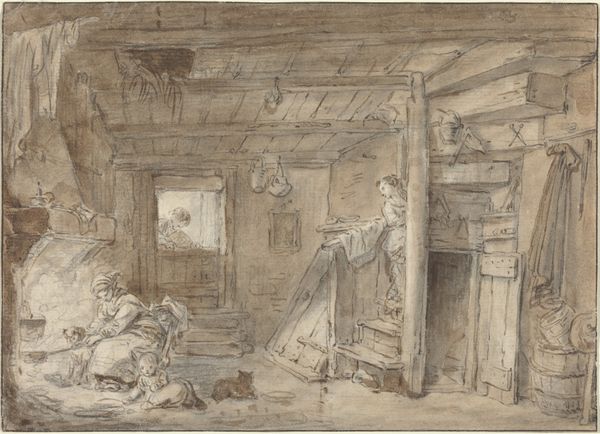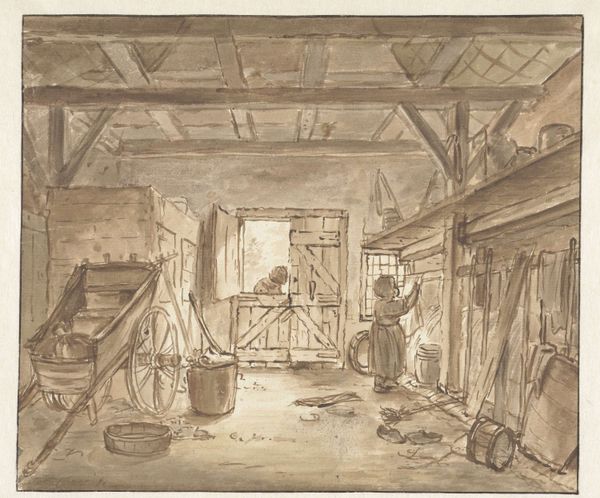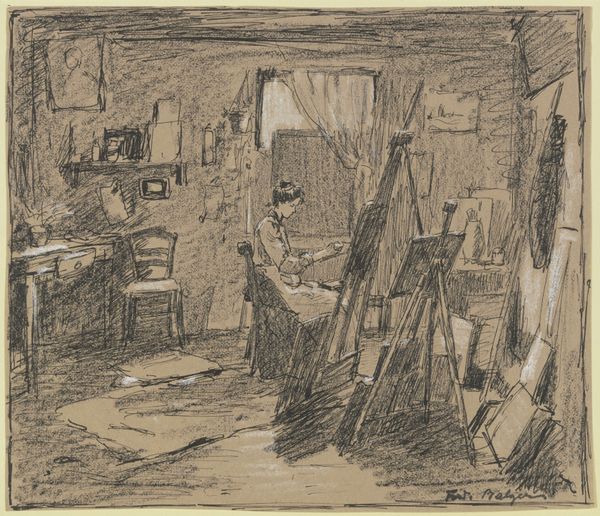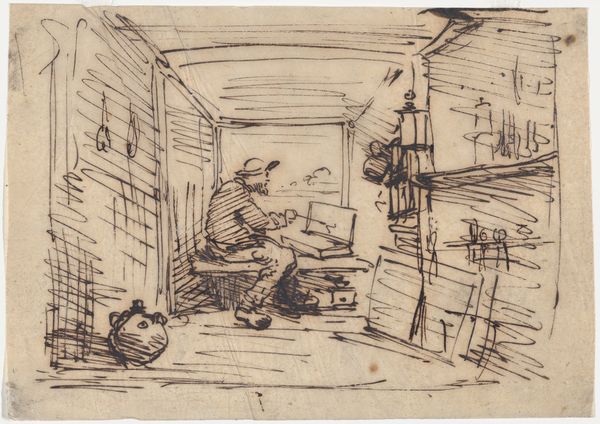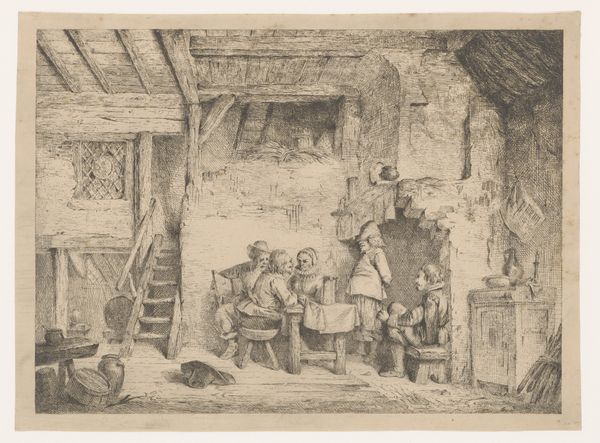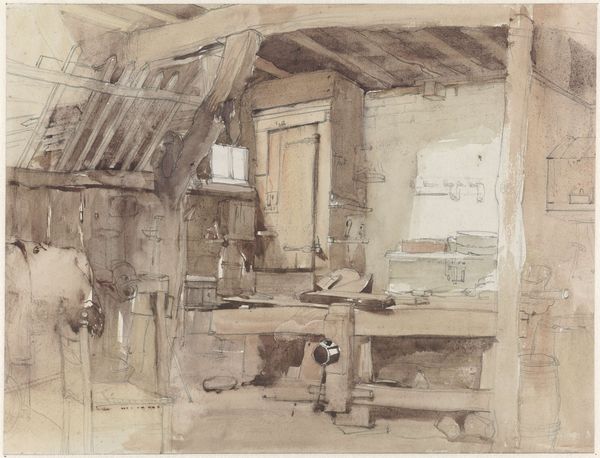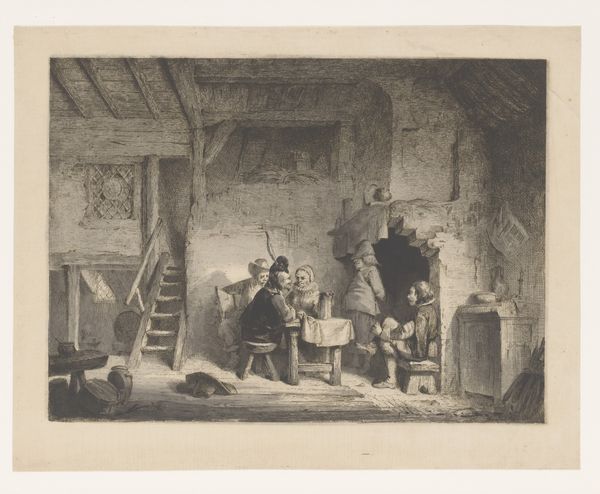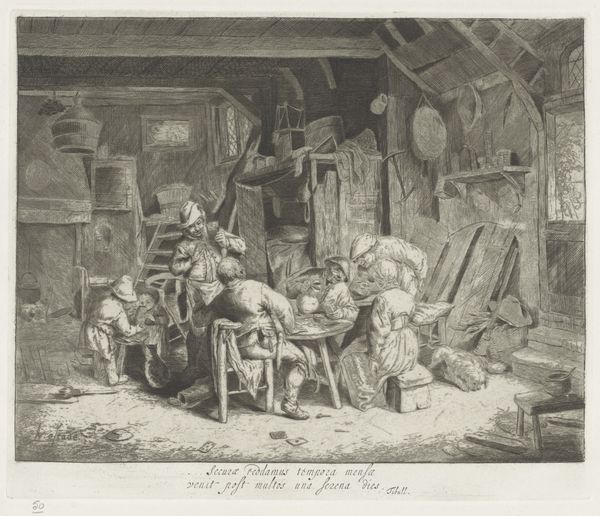
drawing, print
#
drawing
#
dutch-golden-age
# print
#
coloured pencil
#
genre-painting
Dimensions: Sheet: 15 3/4 × 19 1/2 in. (40 × 49.6 cm)
Copyright: Public Domain
Curator: This intriguing piece is "A Painter at Work in his Studio" by Thomas Wijck, believed to have been created sometime between 1663 and 1677. It's currently housed at the Metropolitan Museum of Art. The work is a drawing, a print done with colored pencil depicting exactly what the title suggests. Editor: It certainly feels like an authentic glimpse into the daily life of a Dutch Golden Age painter. The tones are subdued, almost monochromatic, giving it a sense of quiet intimacy, despite all the clutter in the room. Curator: Absolutely. It offers an unfiltered look at the artistic process, but beyond the sheer banality it raises some questions regarding how the figure of the artist, like all others, were fashioned through imagery and visual representations. It's a real microcosm of 17th-century Dutch art and the market forces that drove artists' livelihoods. Editor: The studio space itself is packed with telling details. What I find really fascinating is the assortment of objects—the skull, the busts, even the globe perched on top of the cabinet. These aren't mere props; they're potent symbols related to Vanitas and Humanism. Curator: I agree completely. And they were certainly crucial to how a painter branded and presented themselves to patrons. Consider, for instance, how the inclusion of scholarly items like the globe or the classical sculptures aimed to elevate painting to the status of a liberal art, just as legitimate as any scholarly pursuit. It reinforced the artist's intellectual capabilities and cultured sensibility. Editor: That makes complete sense when looking at the placement of those sculptures, high up on the cabinet and at the edge of our eye. They would immediately connote, at least to an erudite audience, a specific sensibility and skill in a world dominated by symbolic language. There is a real cultural performance on display. Curator: The broken window too carries a loaded history. Is that an element of pure realism in the context of Holland's golden age, or a social commentary related to poverty and urban environments? This work offers great insights into that discussion. Editor: In this reading I tend to go with the real here, which goes against everything else. However, as a closing remark, this piece invites endless interpretations because of how grounded in material reality its symbolism feels, or at least, is styled to appear. Curator: I completely agree; for me it sparks so much debate surrounding not only who a painter might have been but also how artistic environments were produced and marketed to the general population.
Comments
No comments
Be the first to comment and join the conversation on the ultimate creative platform.
